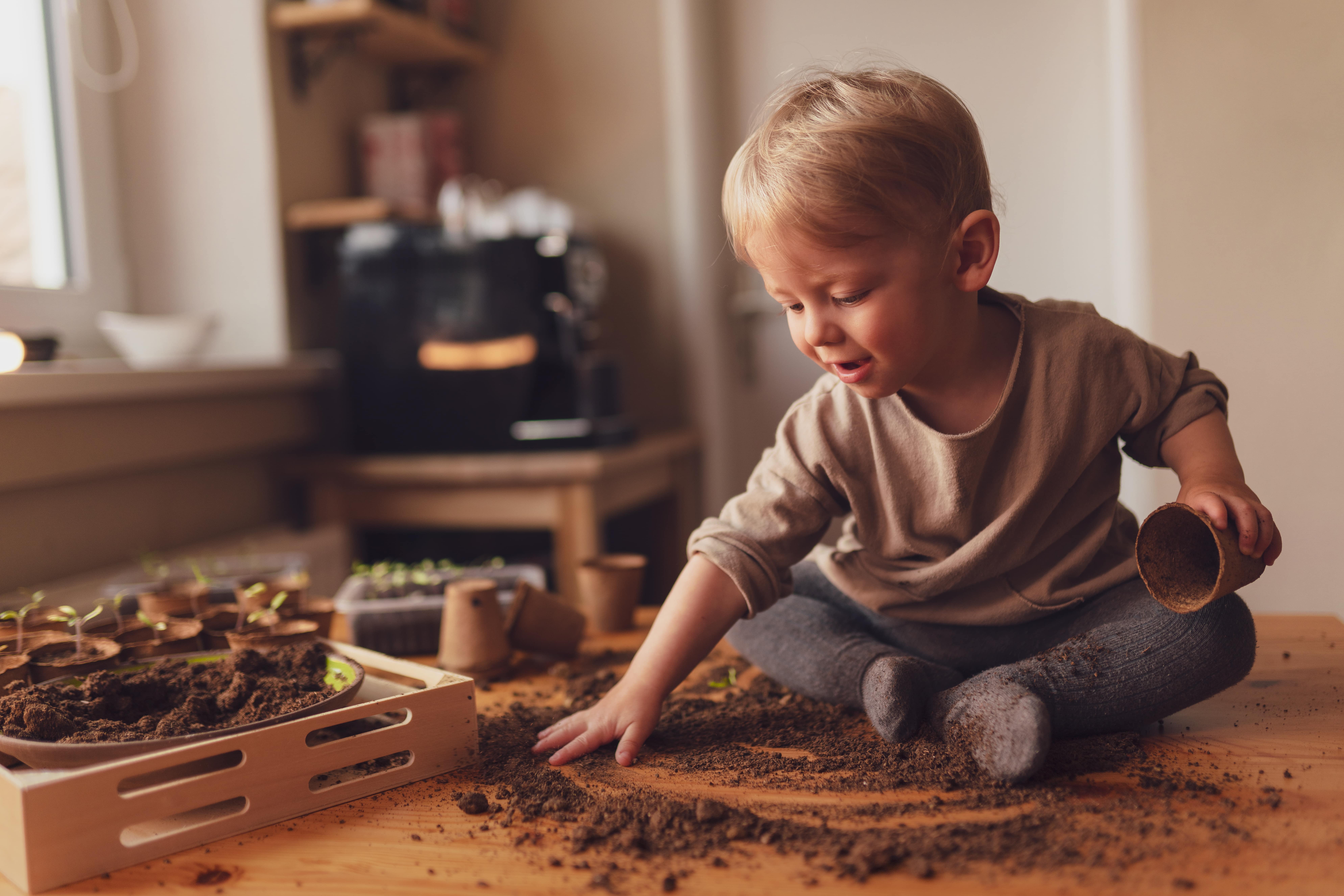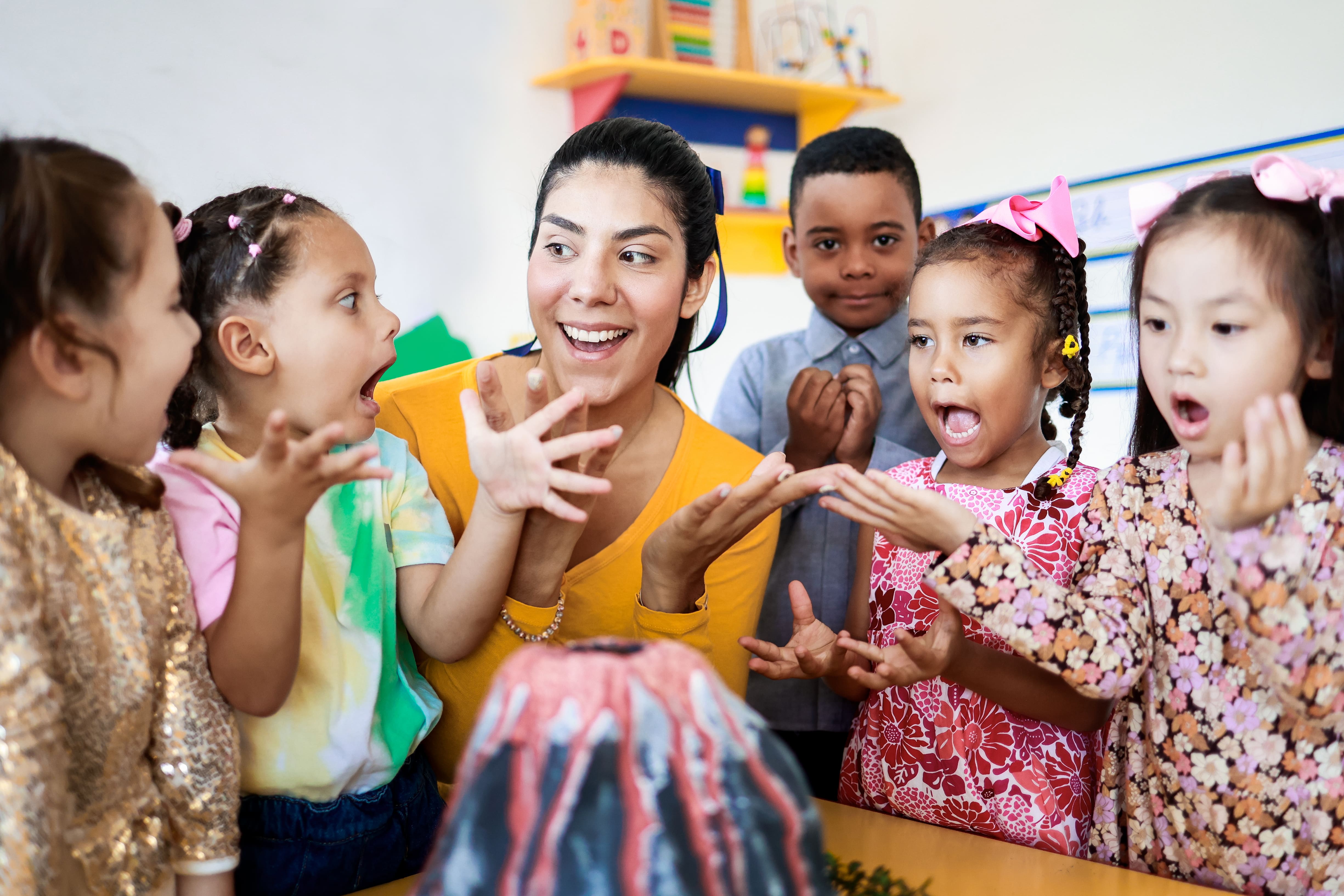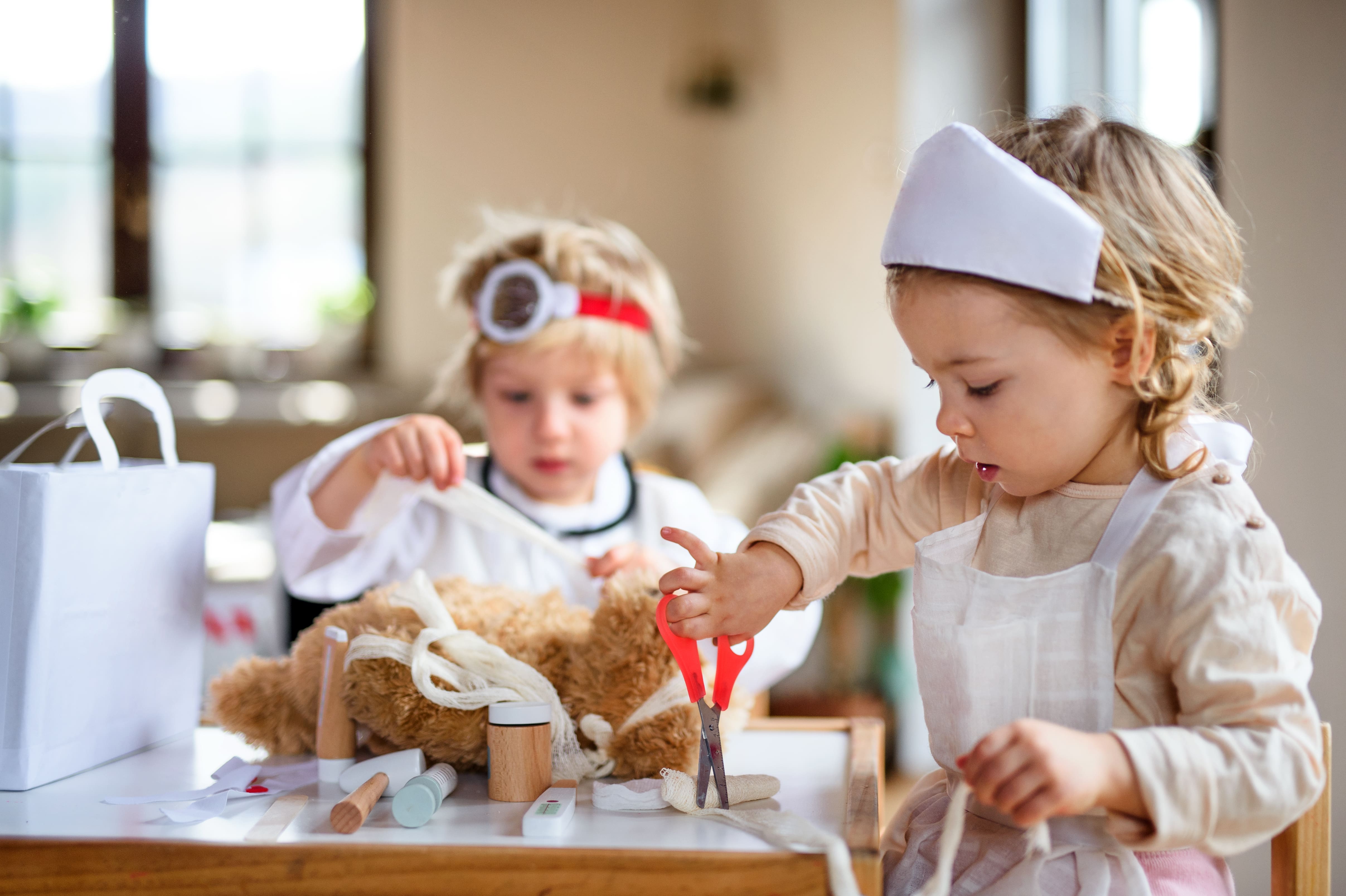Discover how our BeeCurious curriculum integrates environmental stewardship into early education, nurturing young learners' respect and responsibility for the natural world.
Tiny hands gently sift through soil, carefully planting seeds in small pots. Nearby, other children are eagerly watching as kitchen scraps are turned into rich compost, while a group of school-age kids huddle together, sketching out their vision of a solar-powered city. These aren’t just activities to keep little ones busy, they are the heart of a curriculum dedicated to something much bigger: environmental stewardship.
Here at BrightPath, environmental stewardship isn’t just a subject to be covered; it’s a way of life. Our educators believe that the values of caring for our planet need to be woven into the very fabric of early education. But how do you teach a five-year-old about conservation or the importance of renewable energy? Using the BeeCurious Curriculum, the answer lies in the hands-on, the tangible, and the everyday.
Planting Seeds of Respect and Responsibility
From the moment they step into the classroom, children in our centres are introduced to the wonders of the natural world. Respect for nature, conservation, and empathy for all living things are the bedrock of their learning experiences. Whether it’s through tending to the classroom plants or exploring the diversity of bugs in the garden, children learn to appreciate the beauty of nature and the importance of caring for it.
“We want to instill a sense of responsibility in our children, and we do that by connecting them with the environment in meaningful ways,” says Sharon Pauwels, Education and Quality Manager at BrightPath. “It’s not just about telling them to recycle or turn off the lights; it’s about helping them understand why these actions matter.”
Projects That Bring Lessons to Life
Every week, the BeeCurious Curriculum takes these lessons a step further with a dedicated environmental stewardship activity. These aren’t your typical classroom projects. Each one is thoughtfully designed to deepen the children’s connection to nature and to make complex concepts relatable. Upcoming activities include investigating how kitchen scraps can be transformed into compost and creating indoor herb gardens from scratch. These hands-on experiences are designed to engage young minds and foster a lifelong respect for the environment.
We assess the impact of our environmental projects through a combination of observations, formalized assessments, and photo journaling. For example, the “Solar City” project. What started as a simple block-building exercise quickly evolved into a deep dive into renewable energy. The children, guided by their educators, imagined and then created a miniature city powered entirely by solar energy. As they added solar panels (made from craft supplies) to their cardboard houses, the conversation naturally shifted to how we can use the sun’s power to protect the environment. “You could see the light bulbs going off in their heads,” says Sharon with a smile. “They started to really get it. Not just how solar power works, but why it’s important.”
Educators as Guides and Role Models
The success of these projects is no accident. Our BrightPath educators play a crucial role in guiding and expanding the children’s learning experiences. They are not just teachers; they are role models who embody the principles of environmental stewardship in their everyday actions. Whether they’re narrating their observations of a butterfly landing on a flower or assigning leadership roles like watering the plants, these educators are constantly finding ways to deepen the children’s engagement with nature.
“Kids learn by example, so we make sure we’re practicing what we preach,” says Sharon. “We talk about what we’re doing and why, whether it’s sorting recyclables or conserving water during a classroom activity. These little moments add up to something much bigger.”
From Classroom to Community
But the learning doesn’t stop at the classroom door. We are committed to involving families and the wider community in their environmental projects. Themed days and community-based activities, like Earth Day celebrations and neighbourhood clean-ups, bring families together to reinforce the lessons learned in the classroom. “We want our children to see that caring for the environment is something we all do together,” explains Sharon. “It’s a community effort.”
Overcoming Challenges and Looking Ahead
Teaching environmental stewardship to young children isn’t without its challenges. Abstract concepts like sustainability can be difficult for young minds to grasp. However, our educators have found ways to make these ideas tangible and relatable. They focus on consistent role modeling and creating experiences that bridge the gap between cause and effect, helping children understand the impact of their actions on the environment.
Looking to the future, we plan to continue evolving the BeeCurious environmental curriculum based on feedback from educators and families. Here at BrightPath, we recognize that environmental stewardship isn’t a one-size-fits-all concept, and that different regions have unique natural environments that offer diverse learning opportunities. By embracing these differences and continually adapting our programming, we hope to nurture a generation of young learners who are not only knowledgeable about the environment but passionate about protecting it.
Stay in the know and check us out on social media! Follow BrightPath on Facebook and Instagram for a variety of fun activities and daily inspiration.







